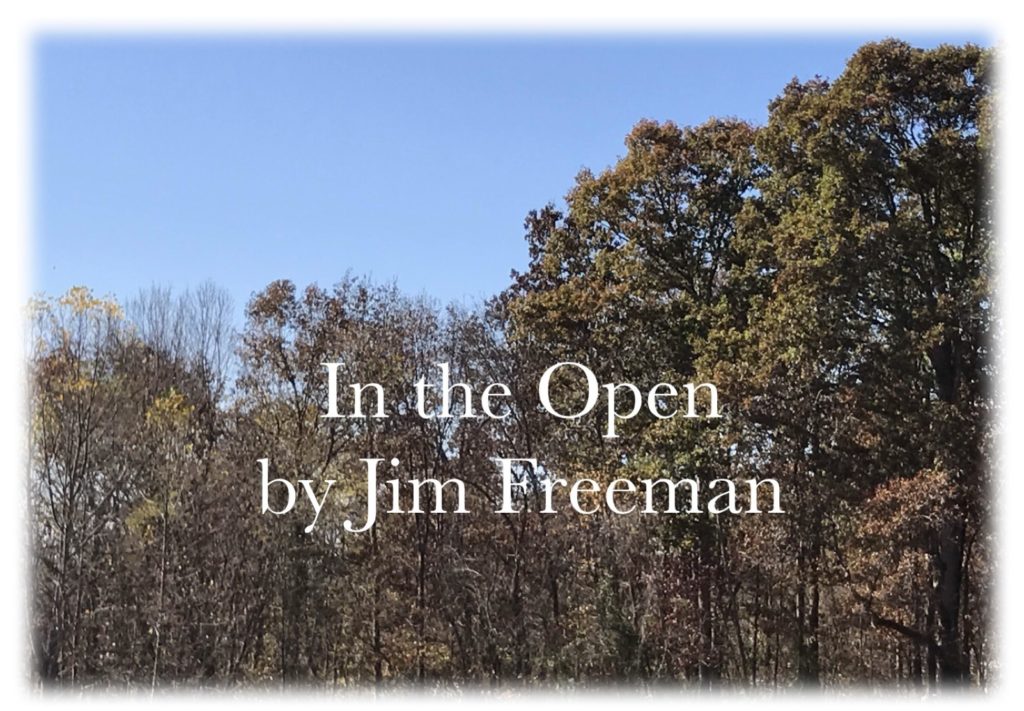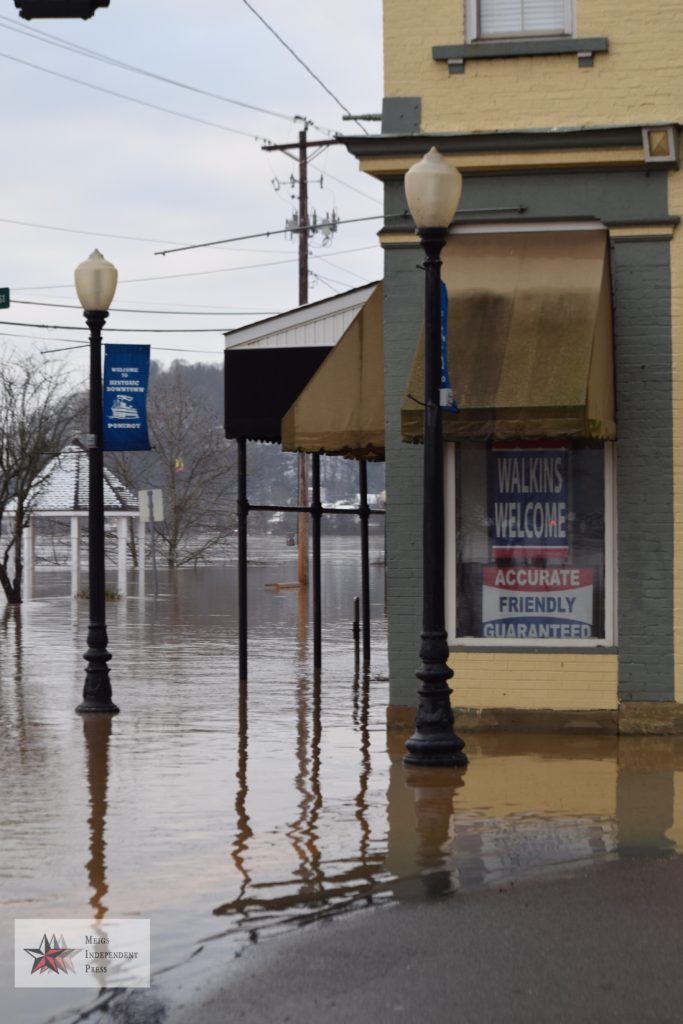In the Open: Bend Area experiences first Facebook Flood

 Like many people I was wondering when we were going to notice climate change. I just didn’t expect it to all happen during a single, long, Presidents’ Day weekend.
Like many people I was wondering when we were going to notice climate change. I just didn’t expect it to all happen during a single, long, Presidents’ Day weekend.
Consider this: we had a storm with high winds, power outages and flash flooding on Friday, an unexpected snowstorm on Saturday, and Ohio River flooding Sunday and Monday, followed by record highs on Tuesday. Fortunately we missed the follow-up flood (which was supposed to be even bigger) the next weekend.

It was like climate change was condensed into a single long weekend. Of course wildly changing weather is typical of the Ohio River Valley, hence the old saying “If you don’t like the weather, wait five minutes; it’ll change.”
What was so different about the Presidents’ Day Flood than floods we’ve experienced in previous years? Nothing really, the river goes up and the river goes down, just like it has for the past 2.5 to 3 million years. (Incidentally, the Ohio River is a youngster in river years; especially compared to its misnamed tributary the New River, which may be as old as 65 million years.)
The same places flooded that have always flooded; if you have lived in the Great Bend any length of time, you know those places and roads to avoid, as well as the shortcut “flood roads” to get around the standing water. One good thing, the “new” portion of U.S. 33 from Ravenswood to Five Points made getting around a lot easier than it had been in the past.
However, it had actually been a few years since the last inundation; the last one was on Jan. 9, 2005 – more than 13 years ago – and there are people driving cars now that aren’t old enough to remember it.
Actually the biggest difference between this Ohio River flood and those of the past is that this one was well-documented and shared on social media. It was our first Facebook Flood, and hence we were deluged with high-quality digital pictures including stills, video, and even live video from drones.
Facebook was actually created in January, 2004, but the news feed was not introduced until September, 2006.
The drones, which also weren’t readily available in 2005, allowed us to look at the flooding in ways that were unimaginable just a few short years ago, while Facebook users shared hundreds of photos with people not just down the street but around the world. Perhaps we live life at a faster pace than we did just 13 years ago, and can’t tolerate something like a river daring to slow us down. Plus, some people may have been lulled to complacency and constructed homes in flood-prone areas over the past 13 years as their riverside camp sites slowly evolved into more permanent structures. I have not heard how the groundhogs along the riverbank fared.
If nothing else, the Facebook Flood and the follow-up flood-that-wasn’t were a reminder that we don’t have as much control over things as we think. However, if there was a silver lining it was that the community remembered how to come together to clean up and prepare for the next time.
Trout Stocking slated
More than 100,000 rainbow trout are expected to be released this spring in 64 Ohio public lakes and ponds, creating excellent fishing opportunities for anglers all across Ohio, according to the Ohio Department of Natural Resources (ODNR).
Weather permitting, rainbow trout will be released Friday, March 16, at Forked Run Lake in Meigs County, and on Friday, March 30, at Dow Lake in Athens County. Other nearby stockings include Thursday, March 29, at Lake Alma in Vinton County and on Saturday, April 21, at Jackson City Reservoir in Jackson.
Rainbow trout are raised at Ohio’s state fish hatcheries and measure 10-13 inches before they are released by the ODNR Division of Wildlife. The daily catch limit for inland lakes is five trout.
Anglers age 16 and older must have an Ohio fishing license to fish in state public waters. The 2018-2019 fishing license is now available and is valid through Feb. 28, 2019. An annual resident fishing license costs $19. A one-day fishing license costs $11. The one-day license may also be redeemed for credit toward the purchase of an annual fishing license.
Licenses and permits can be purchased online at wildohio.gov and at participating agents throughout the state. A complete list of participating license sales agents can be found at wildohio.gov.
Sales of fishing licenses along with the federal Sport Fish Restoration (SFR) program continue to fund the operation of the ODNR Division of Wildlife’s fish hatcheries. No state tax dollars are used for this activity. This is a user-pay, user-benefit program.
Asian Carp discussion to be held
Asian Carp in the Ohio River Basin will be the topic of a presentation hosted by the Raccoon Creek Partnership and the Gallia Soil and Water Conservation District on Wednesday, March 29 at 6 p.m. at the Gallia SWCD office near Gallipolis.
Neil Gillespie from the U.S. Fish and Wildlife Service will discuss how the carp got here, why they are a problem, what has been found in Raccoon Creek, and what control strategies are currently being used.
The presentation will be held at the Gallia SWCD office located at the C.H. McKenzie Agricultural Center at 111 Jackson Pike, Suite 1569, Gallipolis. For more information visit the events page at raccooncreek.org.
Jim Freeman is the wildlife specialist for the Meigs Soil and Water Conservation District. He can be contacted weekdays at 740-992-4282 or at [email protected]








